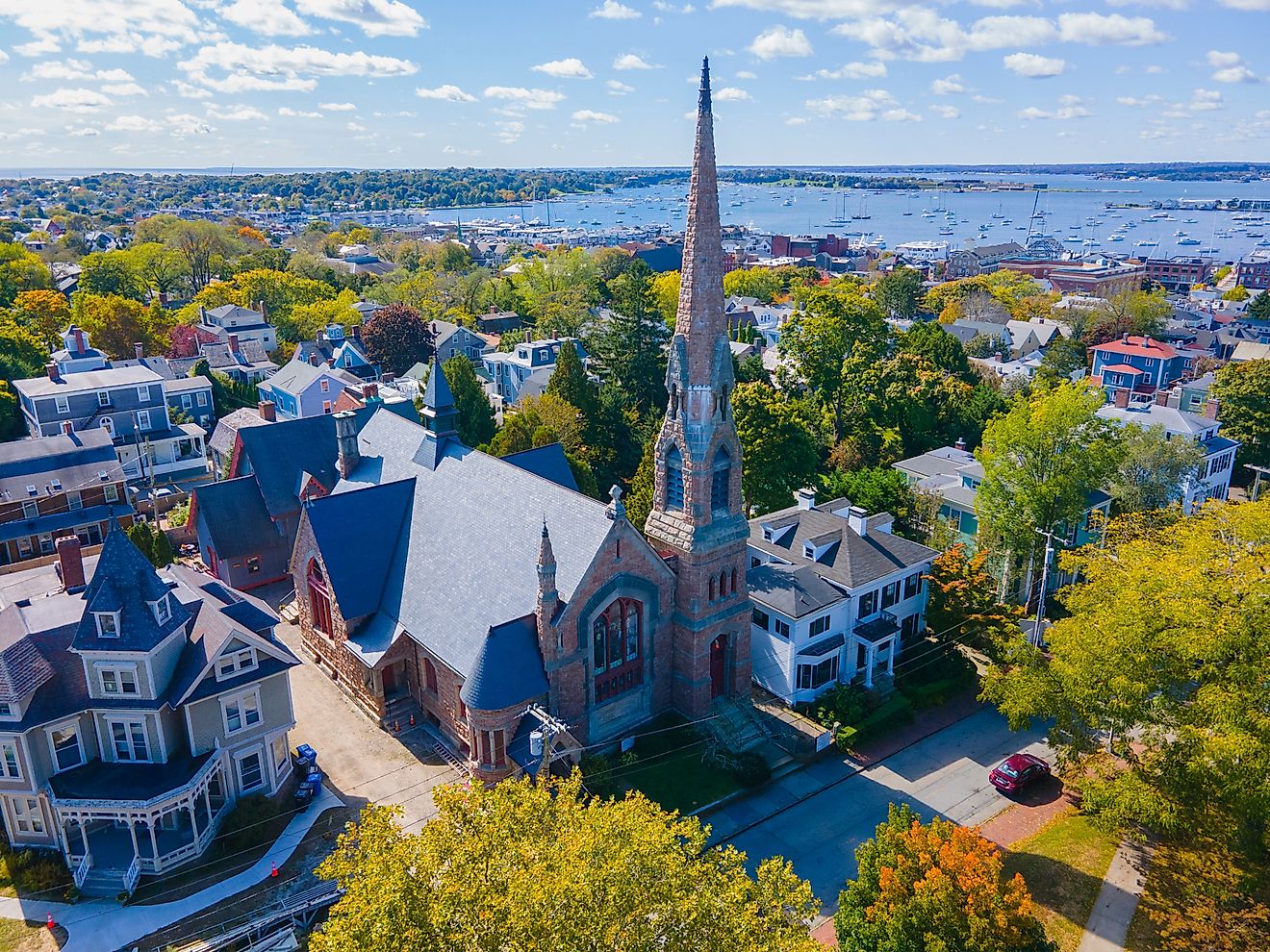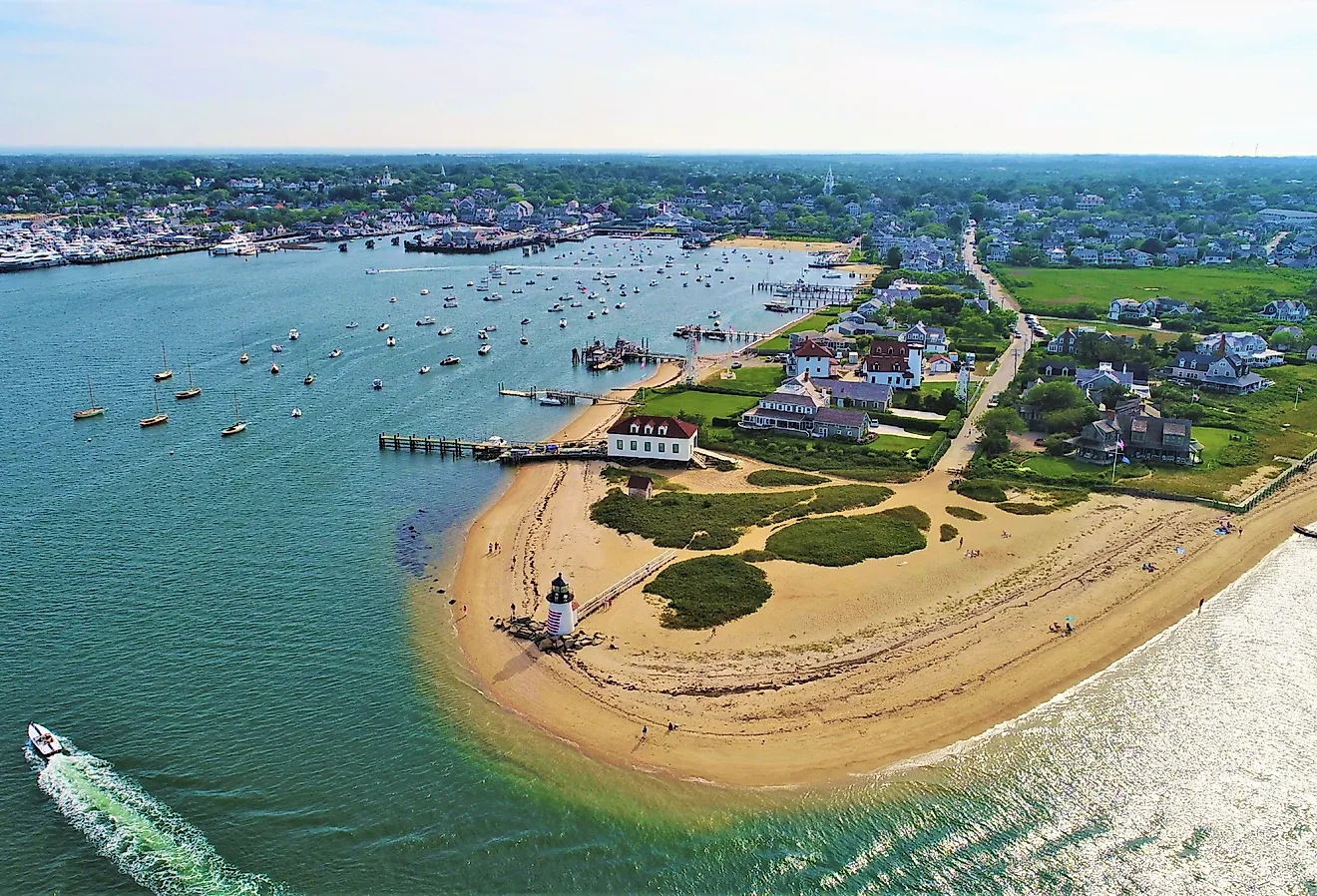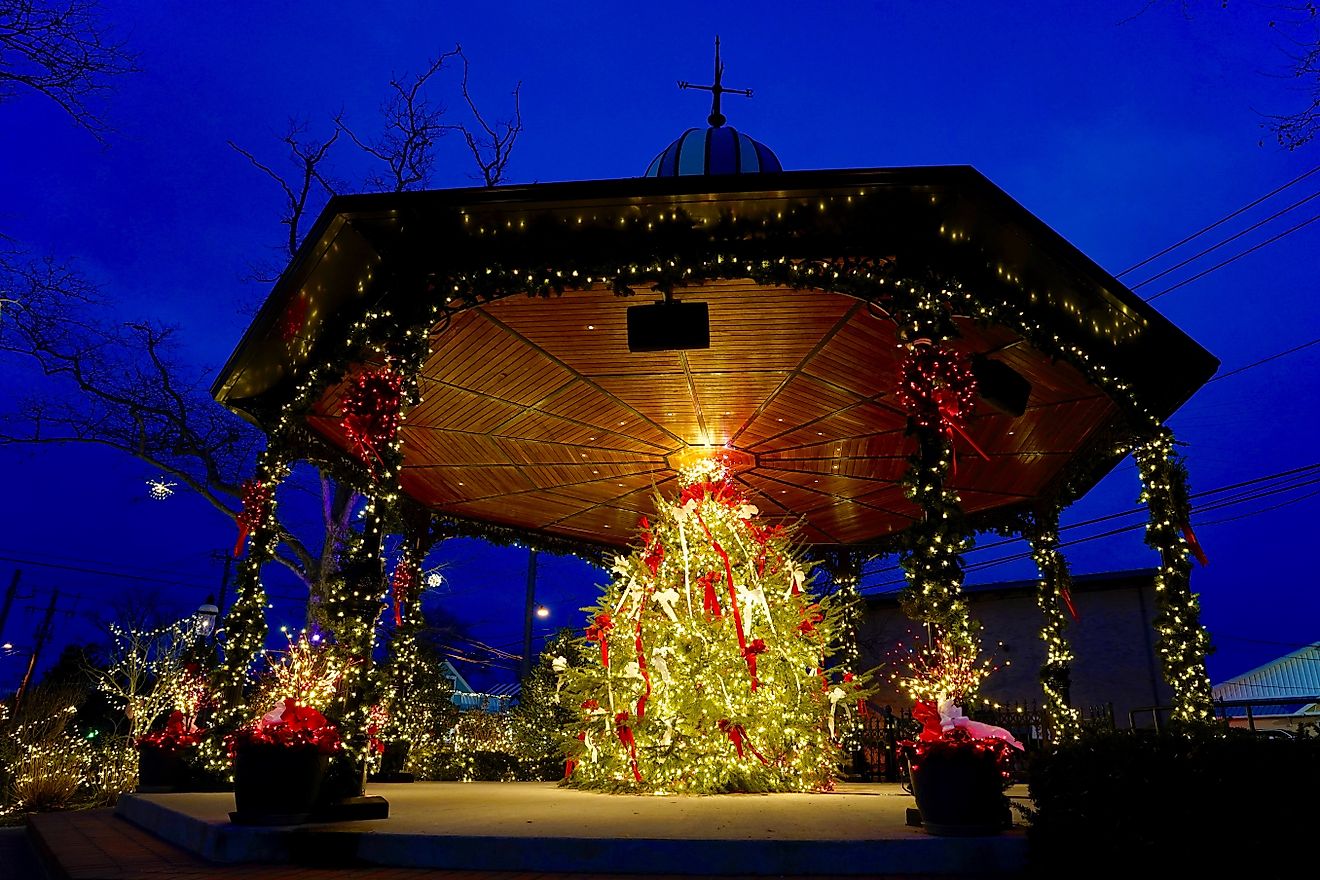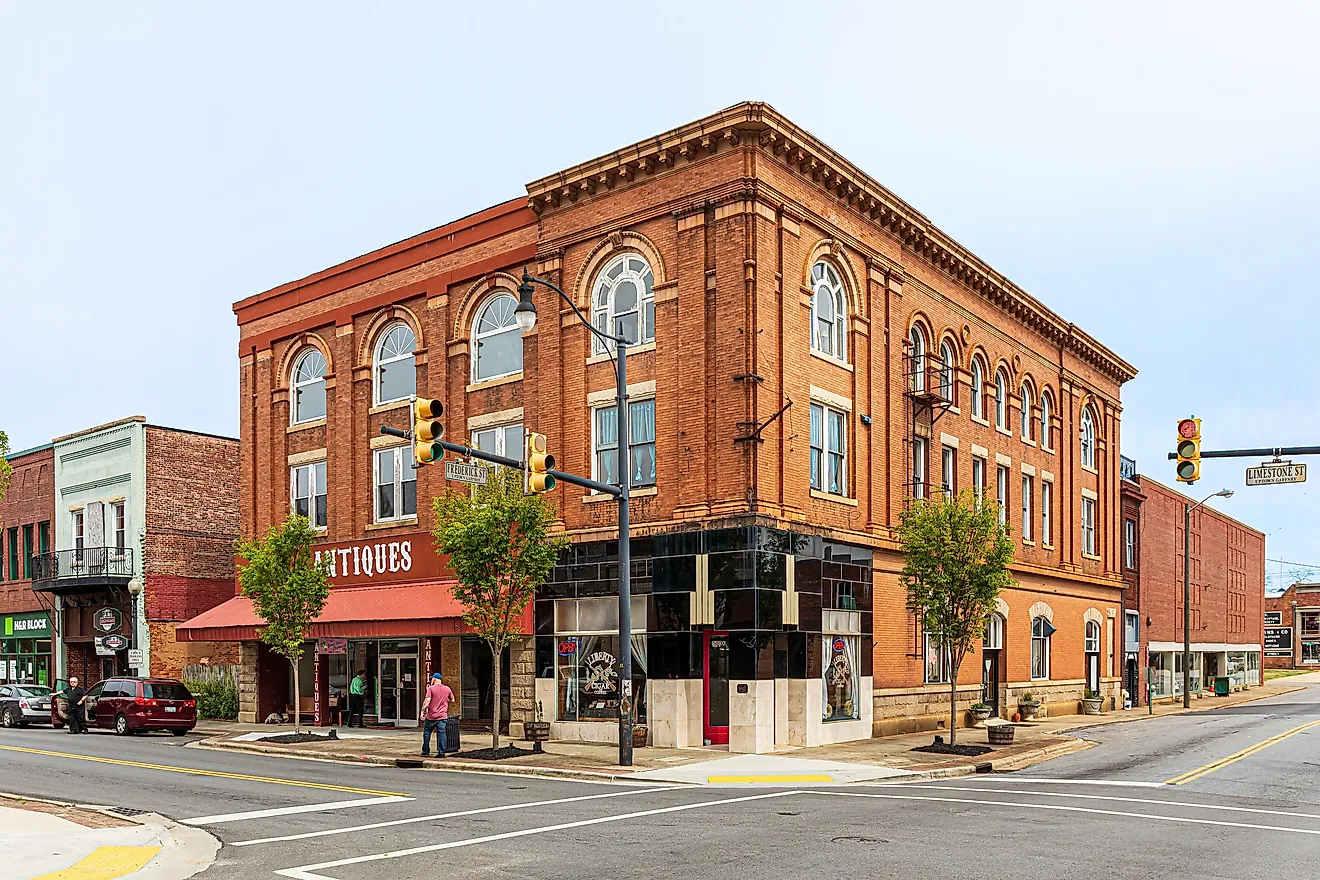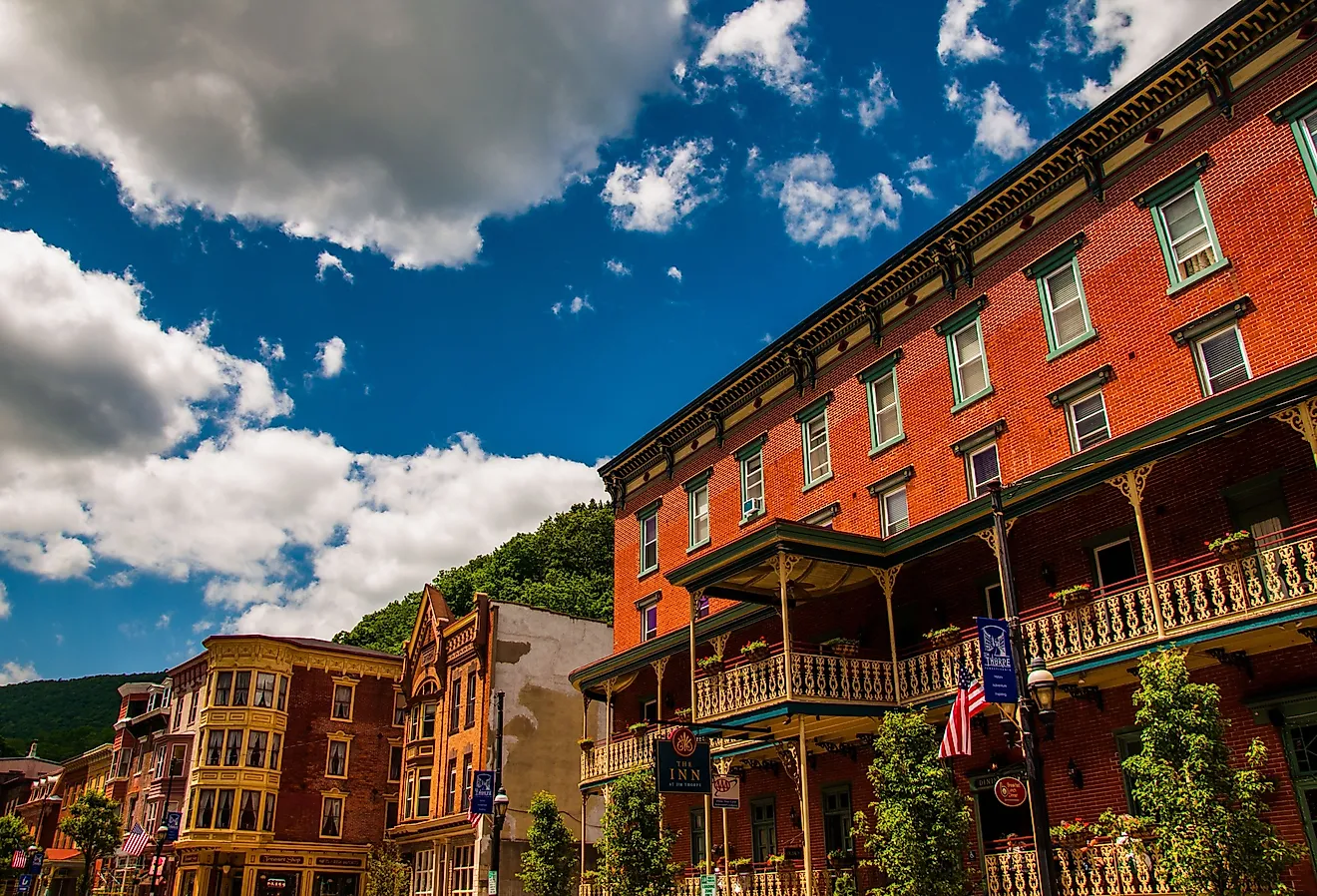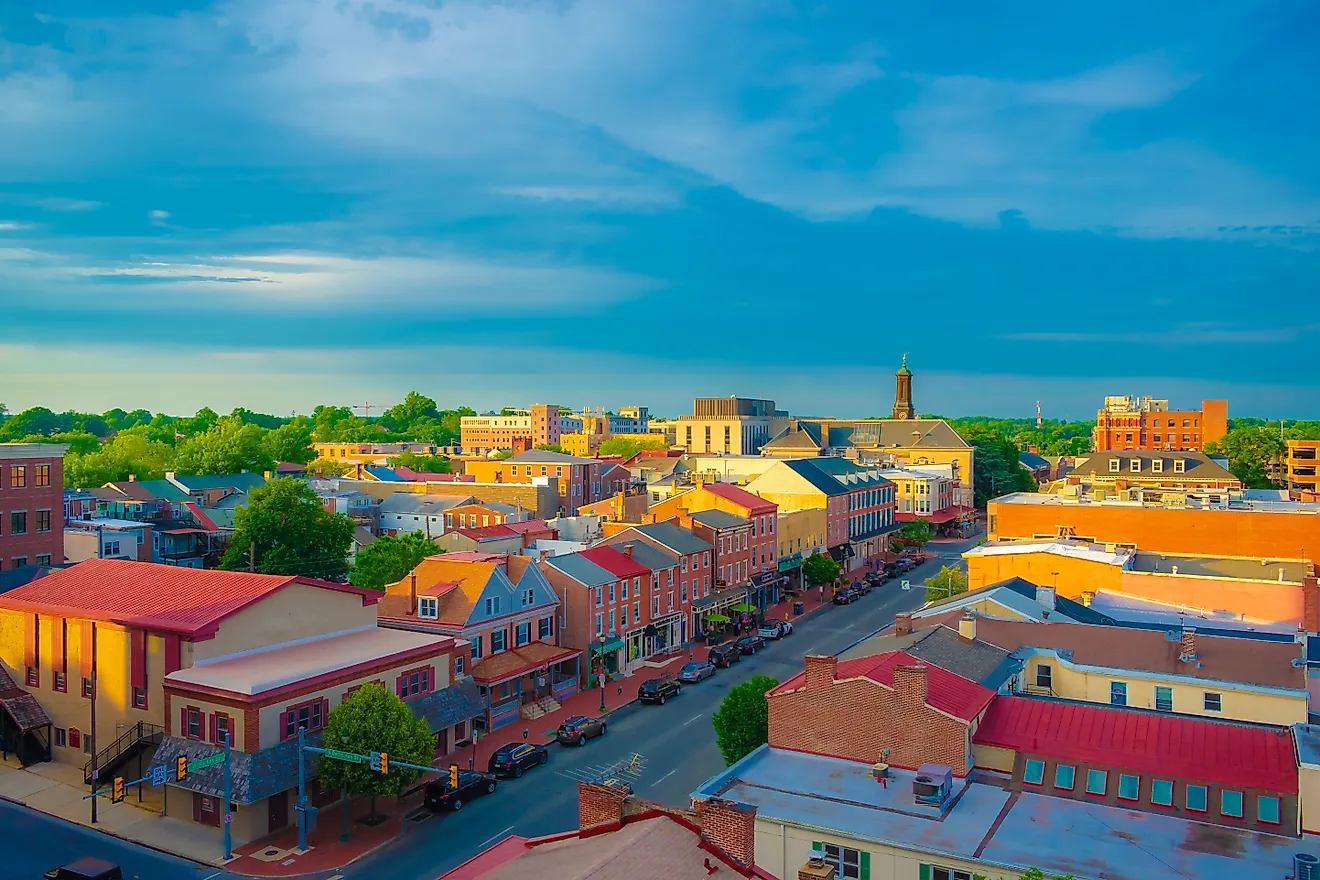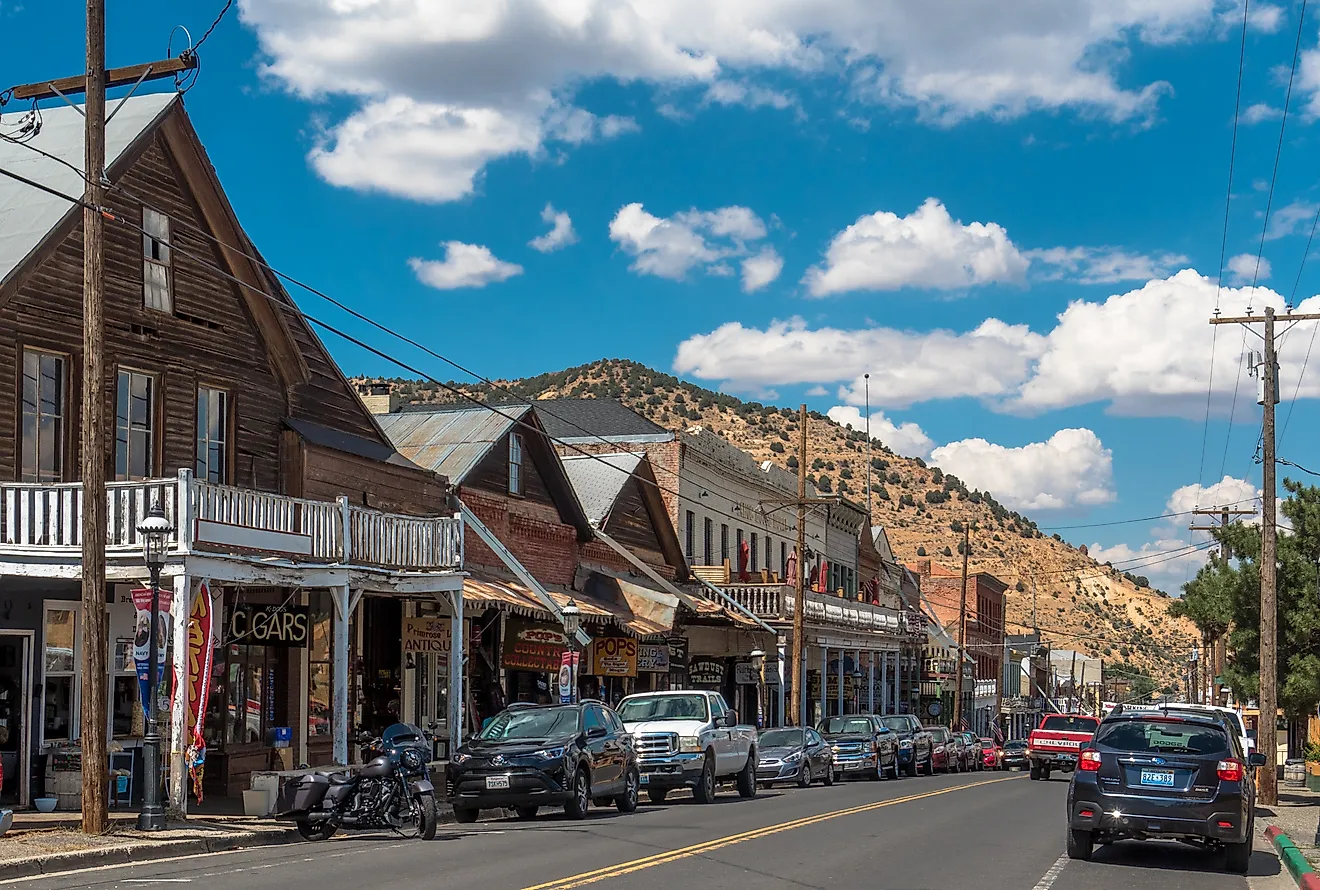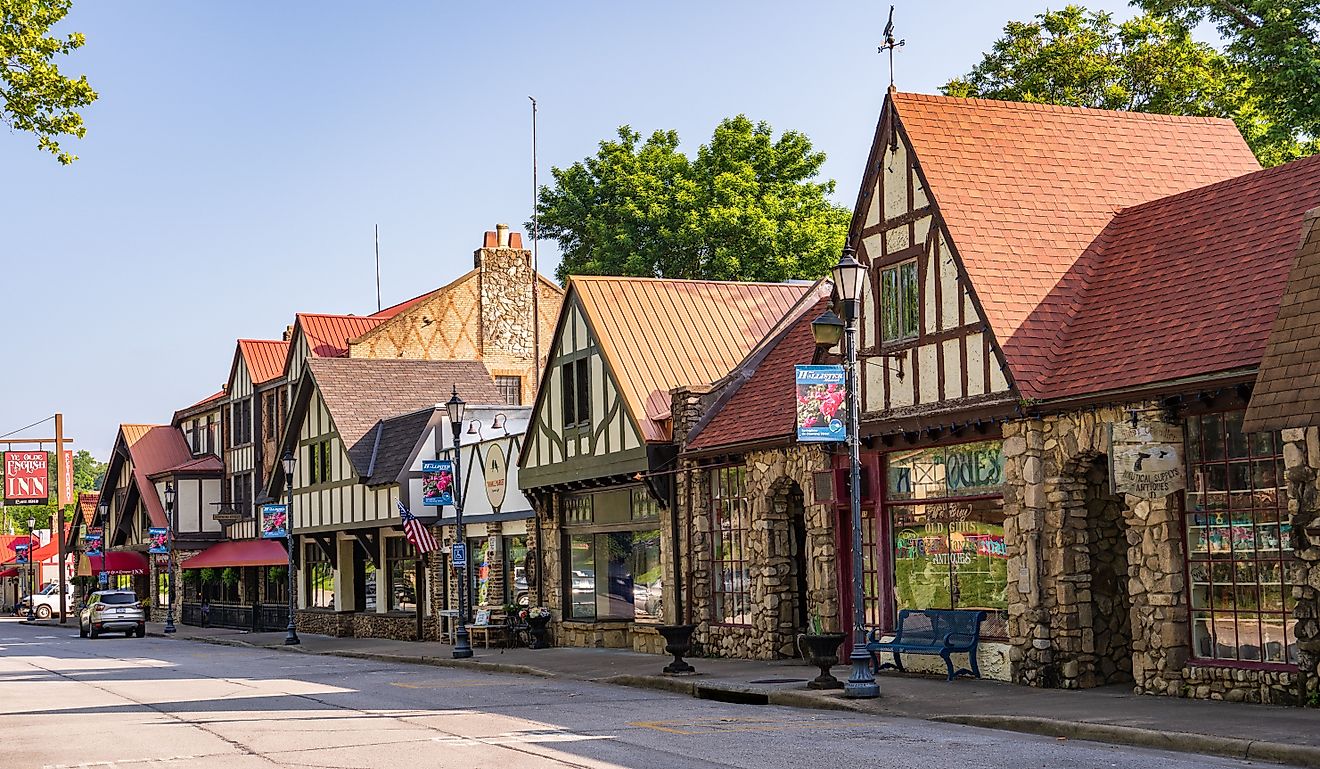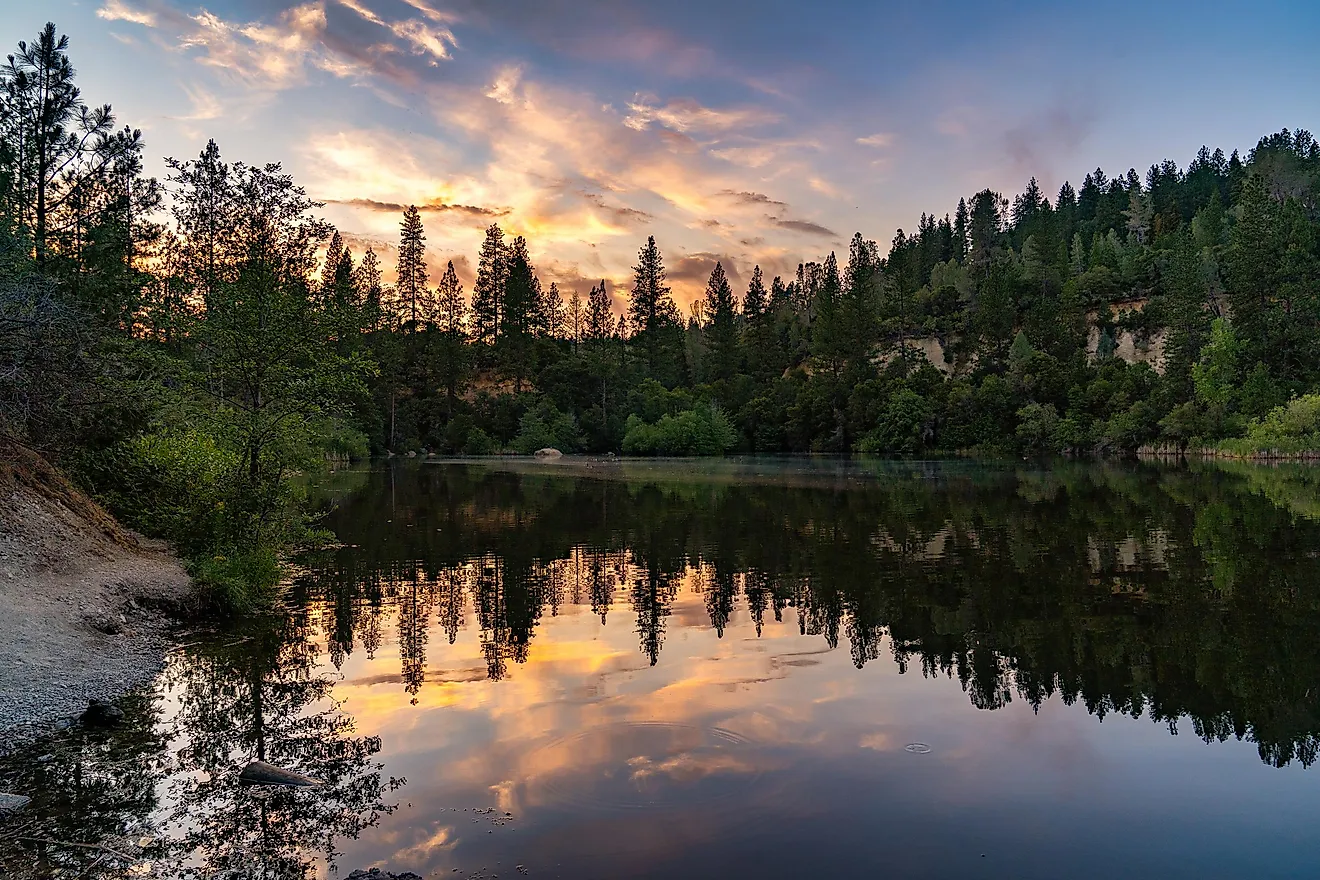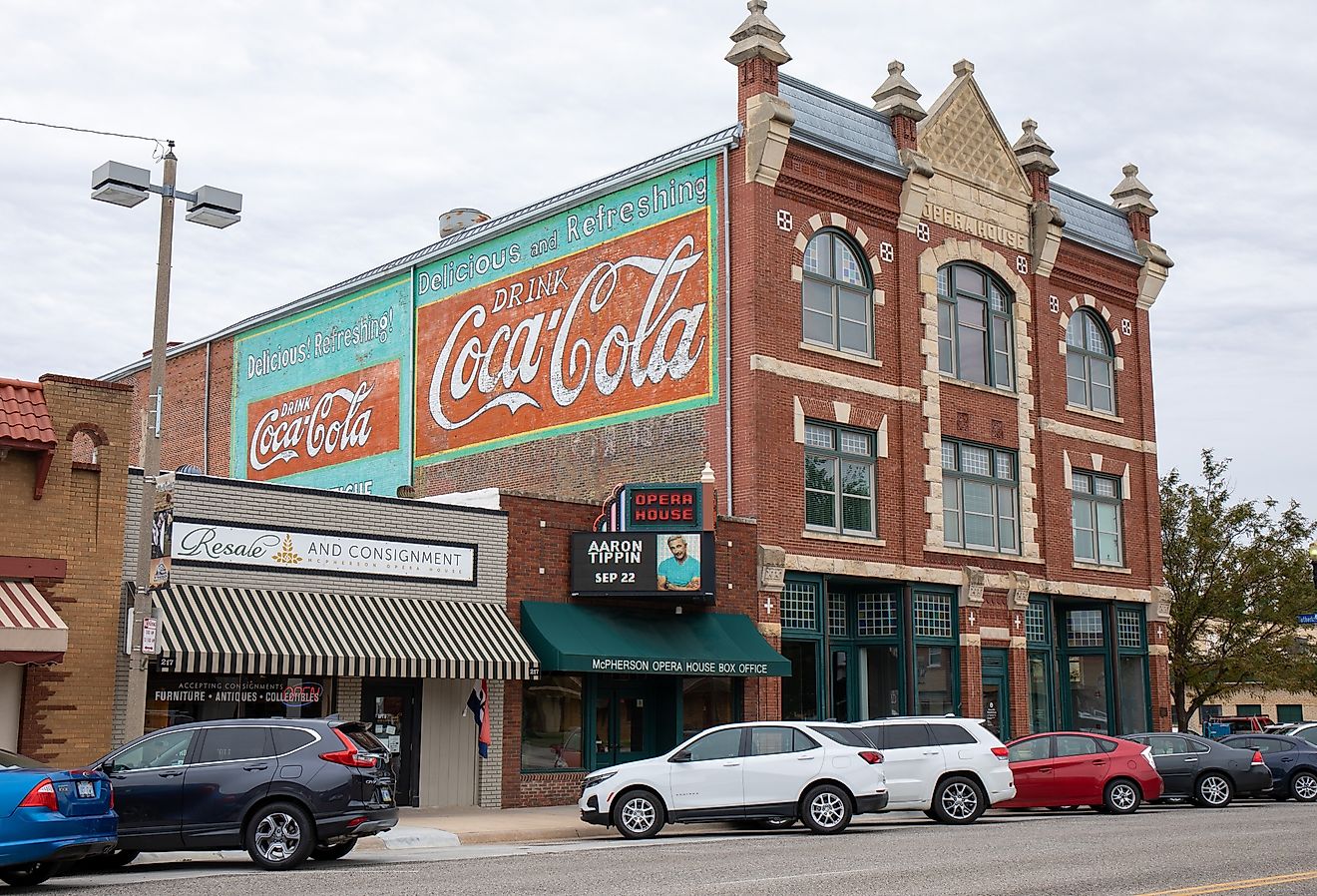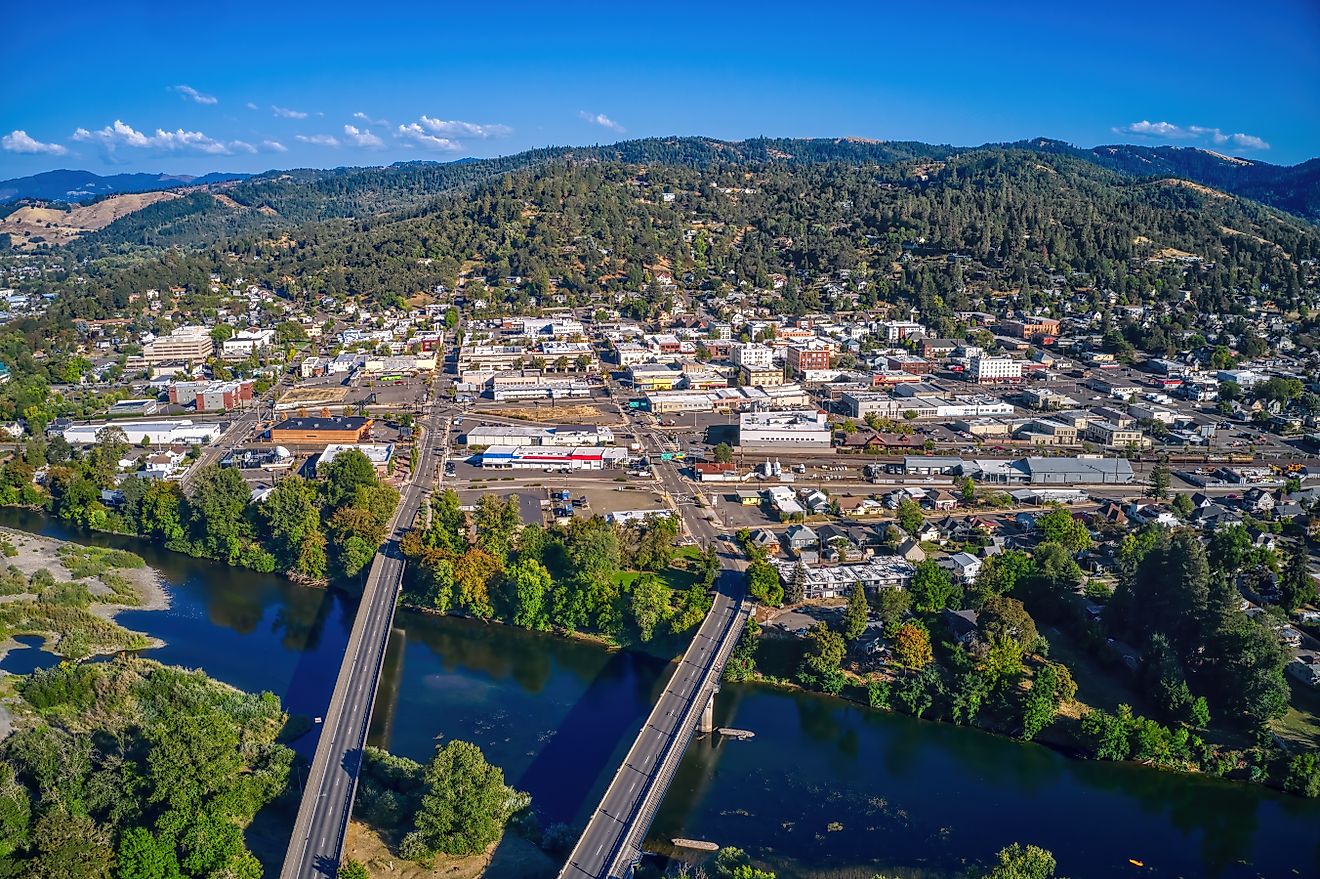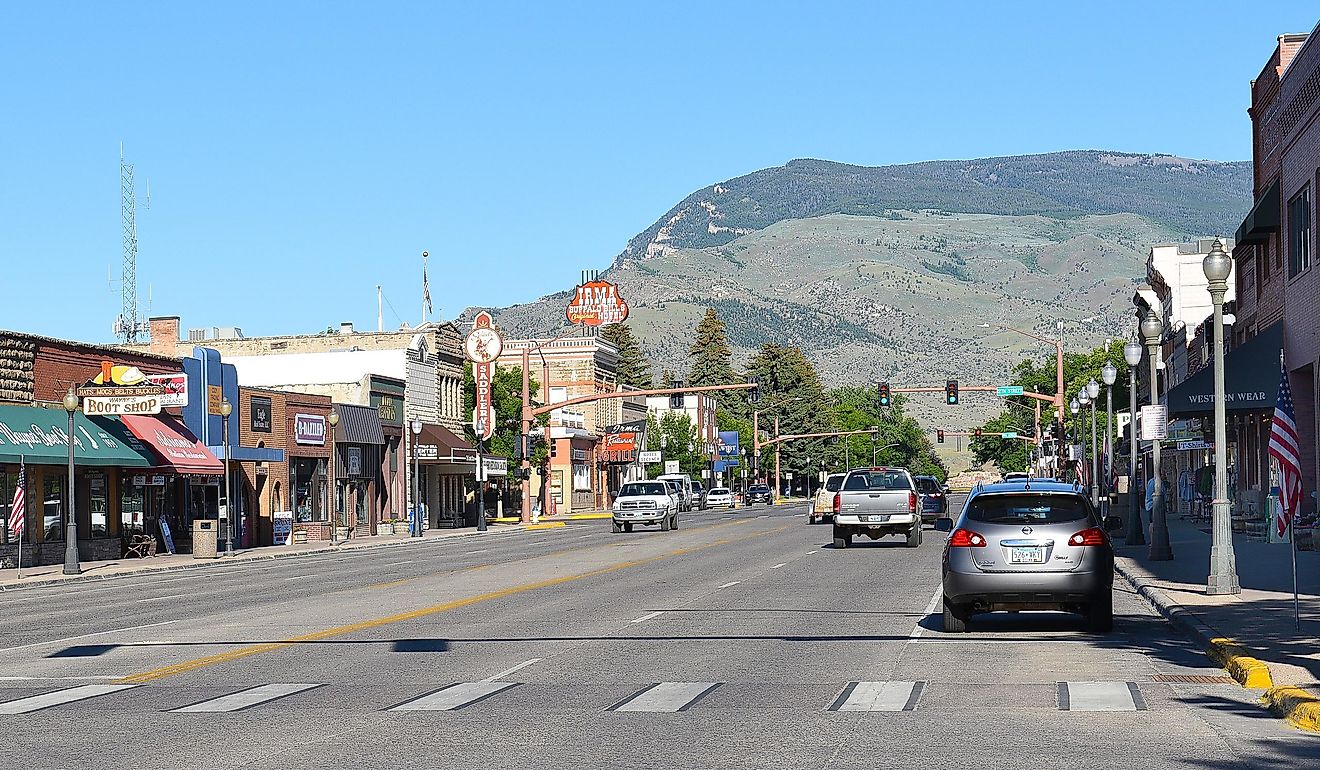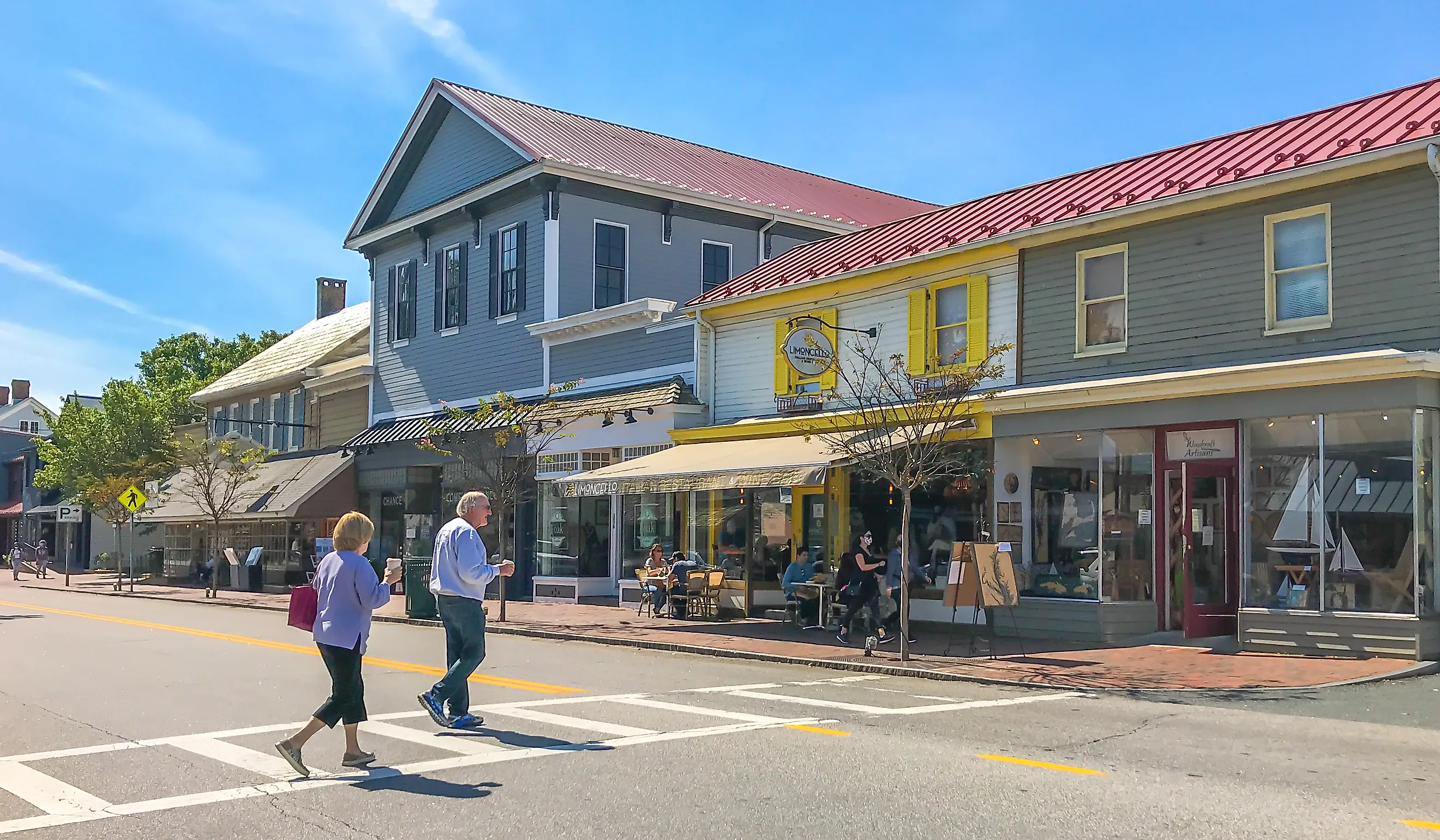
10 Nicest Small Towns On The Chesapeake Bay
The Chesapeake Bay is the largest estuary in the United States, where fresh river water mixes with saltwater from the Atlantic Ocean. Stretching between Maryland and Virginia, the Bay has more than 11,000 miles of shoreline filled with beaches, harbors, and small historic suburbs.
Many of these cities are not only beautiful but also rich in history and culture. Some of the nicest small towns you will find here include St. Michaels, Maryland, a charming waterfront community with a deep maritime past; Cape Charles, Virginia, known for its sandy beaches and colorful historic homes; and Chestertown, Maryland, where colonial-era streets run along the Chester River. In this article, we’ll explore 10 Chesapeake Bay towns that stand out for their scenery and welcoming atmosphere.
St. Michaels, Maryland
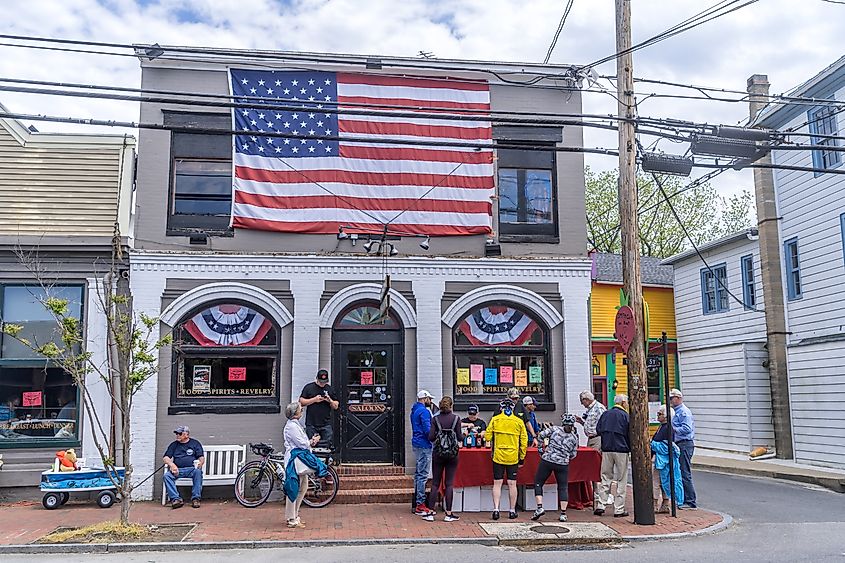
St. Michaels is a small harbor town on Maryland’s Eastern Shore. Located on the Miles River, which connects to the Chesapeake Bay, it has long been tied to the region’s maritime history. The Chesapeake Bay Maritime Museum is its centerpiece, showcasing traditional boats, hands-on exhibits, and the relocated 1879 Hooper Strait Lighthouse that once guided sailors on the Bay.
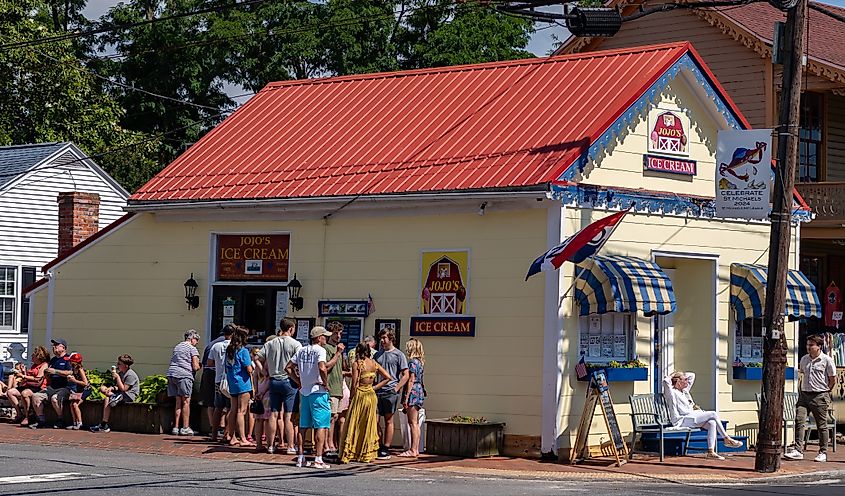
Visitors can also see the Cannonball House, which still carries a cannonball from the British bombardment during the War of 1812. Beyond its history, Talbot Street is filled with galleries, antique shops, and seafood restaurants, making it a lively spot to explore after a stroll along the harbor.
Oxford, Maryland
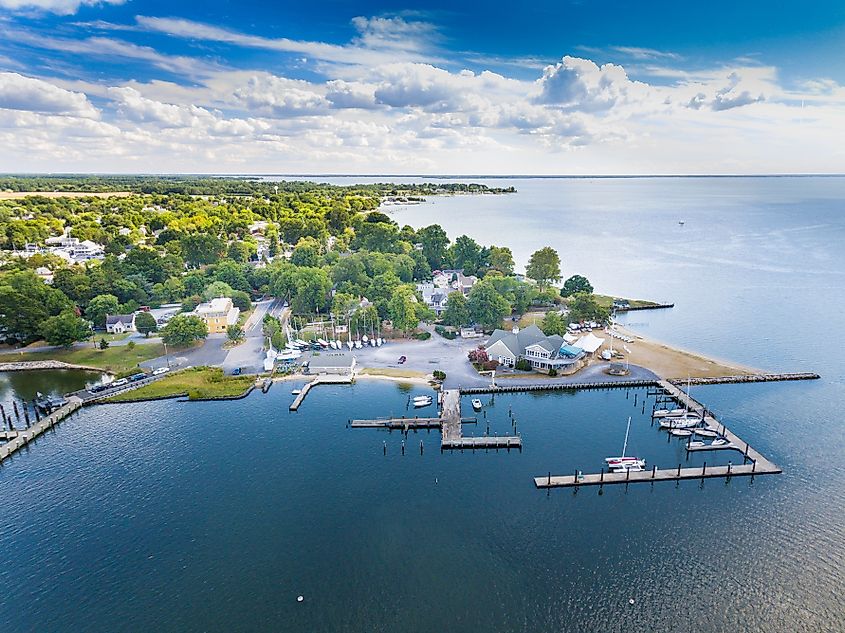
Oxford is a quiet waterfront city in Talbot County. It sits where the Tred Avon River meets Town Creek, giving it a natural harbor and strong ties to the Chesapeake Bay. Established in the 1600s, Oxford was one of Maryland’s earliest colonial ports, and traces of its history are still part of the identity today.
A highlight for visitors is the Oxford-Bellevue Ferry, which first began running in 1683 and is thought to be the oldest privately operated ferry in the United States. The Oxford Museum showcases artifacts from its maritime and colonial past, while historic sites like the 18th-century Barnaby House add to its old-world charm. Along the waterfront, boating, kayaking, and fishing are popular, and the tree-lined streets with galleries, inns, and clapboard homes give Oxford a timeless feel.
Chestertown, Maryland
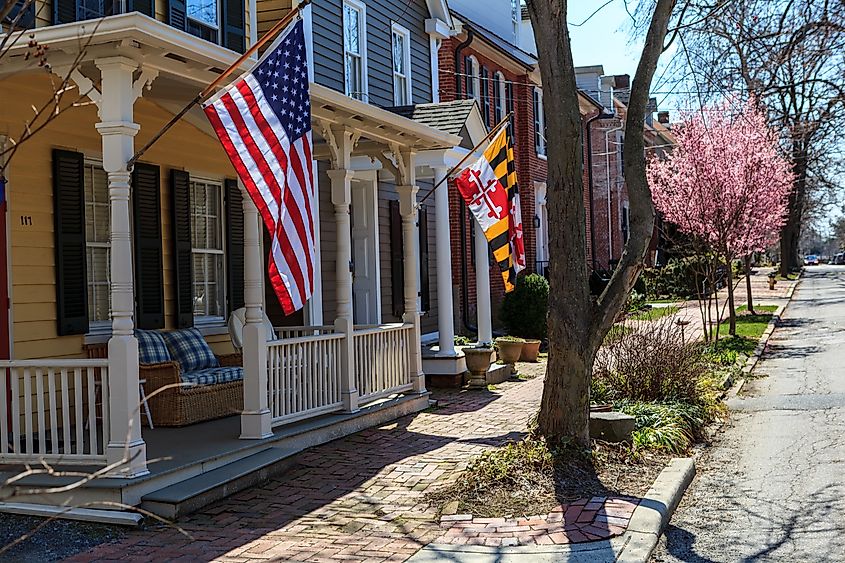
Chestertown is a riverside community on Maryland’s Eastern Shore founded in 1706. It grew into one of the state’s leading colonial ports, handling goods like tobacco and wheat along the Chester River. Its history is still visible today in its well-preserved Historic District, which features numerous Georgian-style homes and is listed on the National Register of Historic Places.
Beyond its architecture, Chestertown is home to Washington College, founded in 1782 as one of the nation’s oldest institutions of higher learning. Visitors can enjoy brick-lined sidewalks, art galleries, and shops in its Arts & Entertainment District, while events like the Chestertown Tea Party Festival each Memorial Day reenact its colonial protest against British trade policies with music, parades, and riverfront activities.
Cambridge, Maryland
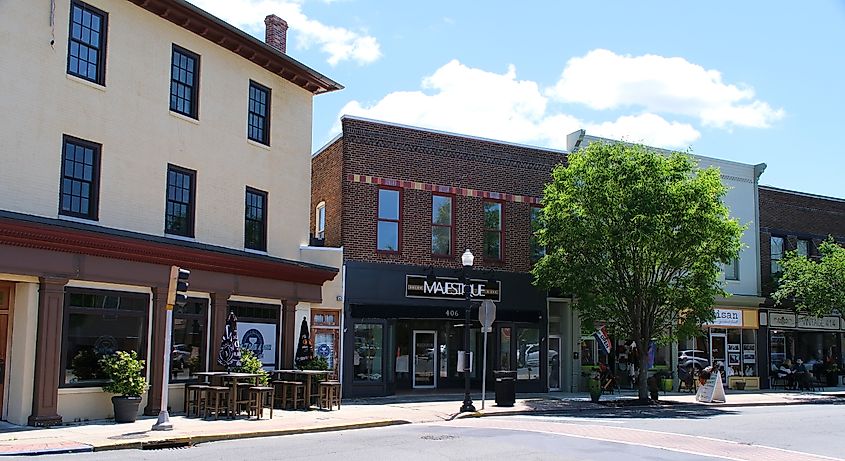
Cambridge, Maryland, is a riverside city on the Choptank River. It serves as the county seat of Dorchester County and combines charm with a deeper historic presence.
Cambridge is rich in history and architecture. Its Pine Street Neighborhood Historic District, established in an African-American community, is now on the National Register of Historic Places. Near downtown sits the Dorchester County Courthouse and Jail, built in 1853 in Italianate style and remodeled with Georgian Revival details. The Goldsborough House, a Federal-style brick home built around 1793, is another architectural highlight. For natural beauty and tribute to social history, the Harriet Tubman Memorial Garden honors the life and legacy of the famous abolitionist.
Havre de Grace, Maryland
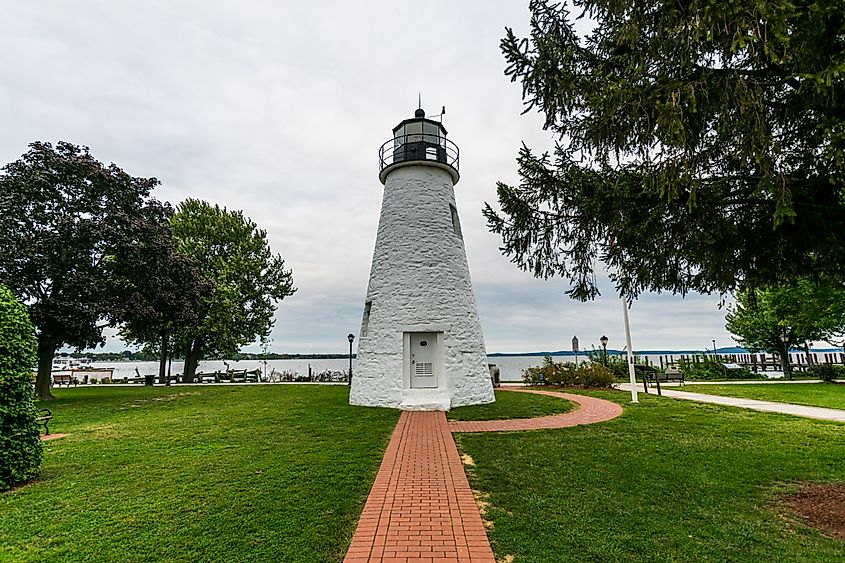
Havre de Grace is a waterfront community in Harford County, Maryland, where the Susquehanna River meets the northern end of the Chesapeake Bay. It takes its name from the French port city of Le Havre. It is well known for Concord Point Light, a 36-foot lighthouse built in 1827 that still overlooks the bay. Visitors can also walk along the waterfront promenade and boardwalk, which connects Concord Point to the yacht basin and provides sweeping views of the river and bay.
The Decoy Museum highlights Havre de Grace's reputation as a center for waterfowl decoy carving, while the Historic District preserves its 19th-century buildings and business district.
Rock Hall, Maryland
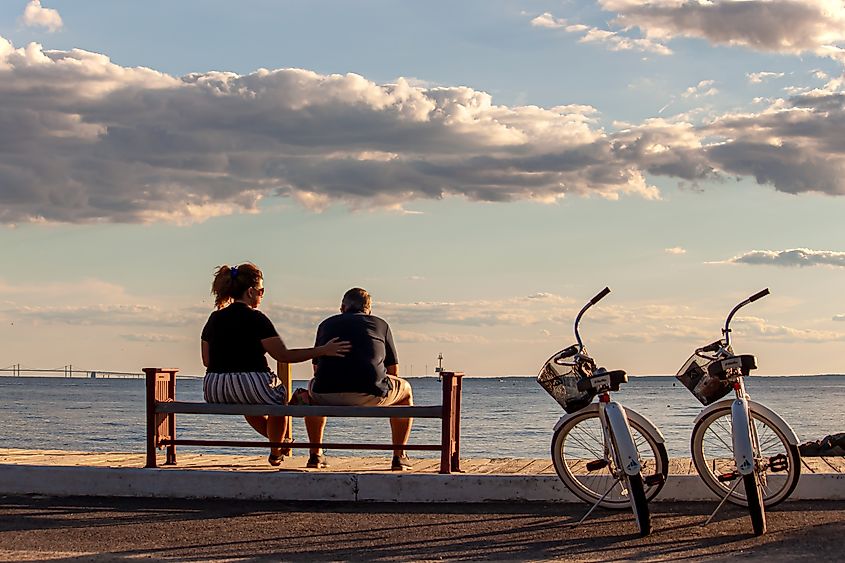
Rock Hall is a waterfront area in Kent County. Originally founded in the 1700s, it gained incorporation in 1908 and has long been centered on fishing, sailing, and maritime trade.
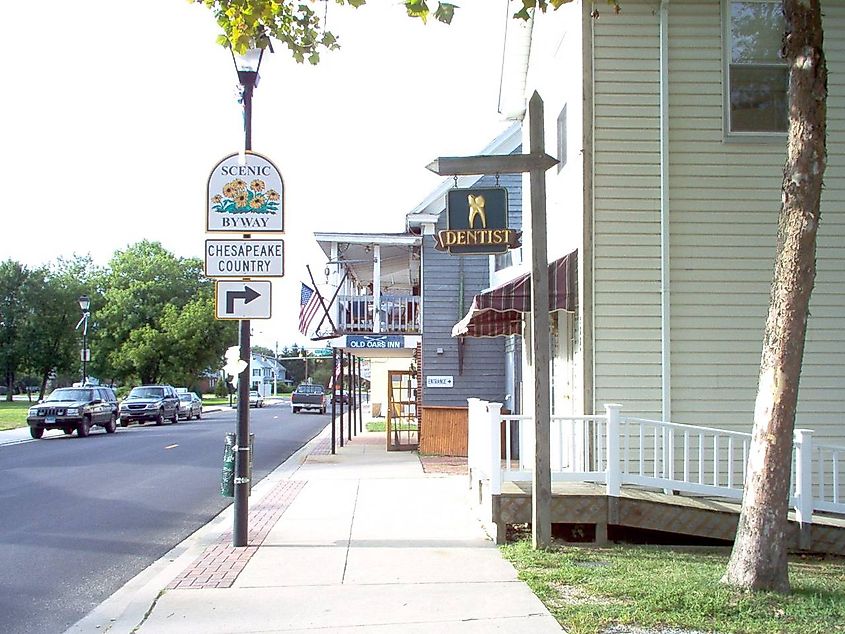
In Rock Hall, you can explore Rock Hall’s Waterman’s Museum, which tells the story of Chesapeake Bay’s working fishermen, shellfish harvesters, and the community’s maritime roots. The Rock Hall Museum showcases local life, artifacts, decoy carving, and the heritage of the Eastern Shore. From the harbor, you can launch fishing or charter trips, especially “rockfishing,” i.e., striped bass, or rent boats to explore the Bay. For nature lovers, the Eastern Neck National Wildlife Refuge lies nearby and offers hiking trails, birdwatching, and refuge land where forest meets marsh and water.
Solomons, Maryland
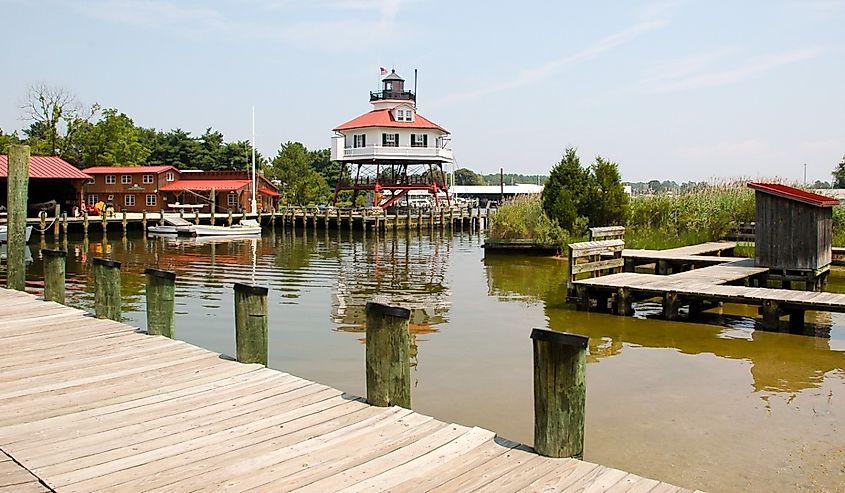
Solomons, also called Solomons Island, lies at the mouth of the Patuxent River as it meets the Chesapeake Bay. The town covers a modest area of around 2 square miles, with tidal inlets and waterways making up a significant portion of its landscape.
One of Solomon’s main attractions is the Calvert Marine Museum, which includes the Drum Point Lighthouse, historic boats, and exhibits about estuarine life, fossils, and maritime heritage. Just across the water is the Governor Thomas Johnson Bridge, which connects Solomons to St. Mary’s County and offers sweeping views of the Patuxent River and the Bay. Art lovers will want to visit the Annmarie Sculpture Garden & Arts Center, a forested art park with rotating installations and a connection to the Smithsonian. For those who prefer being out on the water, Solomons Island Heritage Tours gives you a chance to join a waterman’s crew, cruise to nearby lighthouses, kayak, or birdwatch in the Bay’s calm estuaries.
Cape Charles, Virginia
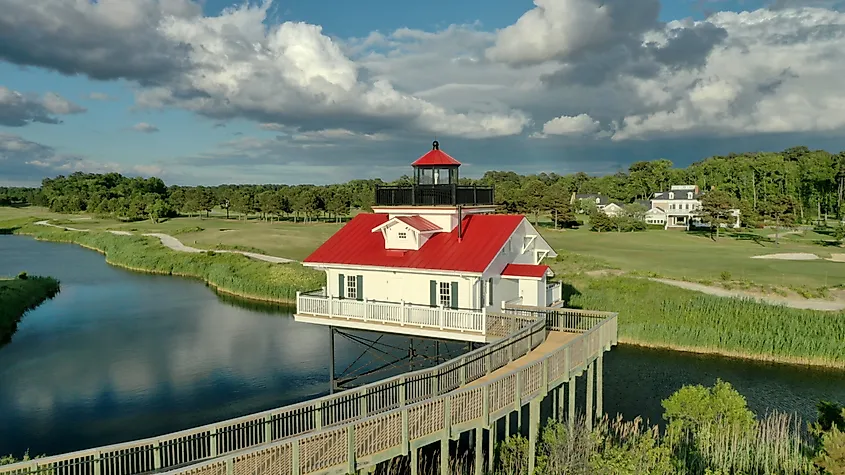
Cape Charles is a settlement on Virginia’s Eastern Shore, built on a peninsula bordered by King’s Creek to the north, Old Plantation Creek to the southeast, and the Bay to the west.
One of Cape Charles’s top draws is the Cape Charles Beach, the only free public beach on Virginia’s Eastern Shore, complete with a beachfront walkway and a wooden pier known as the “Fun Pier.” For history and architecture lovers, the Cape Charles Historic District preserves a large concentration of turn-of-the-century buildings. Outdoor and nature options include Kiptopeke State Park, which offers beach and boating access along the Bay, and the Cape Charles Natural Area Preserve, where a boardwalk lets visitors view dunes, maritime forest, and habitats.
Onancock, Virginia
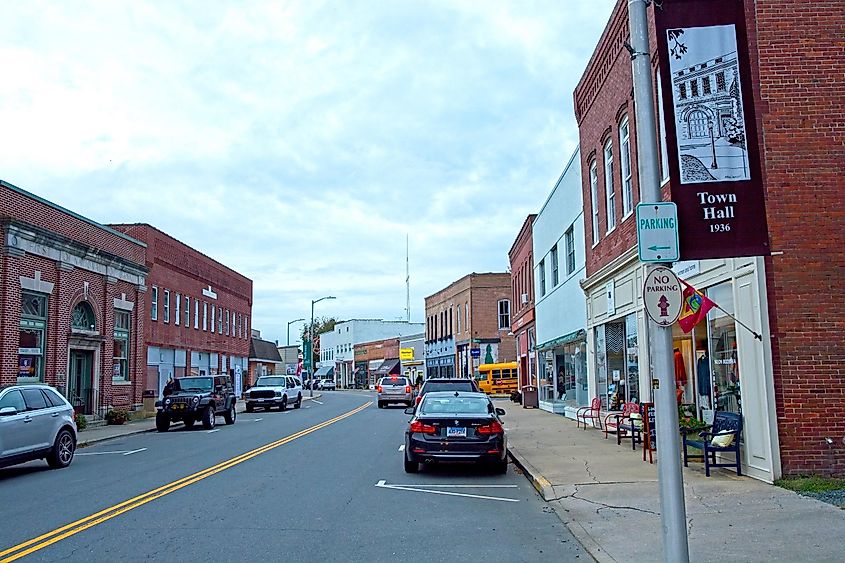
Onancock is a small suburb that dates back to the late 1600s; it was reportedly founded in 1680, and over its history, it has played roles in regional trade and even in late Revolutionary War actions on local waterways.
In Onancock, you will find several historical and cultural draws. The Hopkins & Brother Store, built in 1842, is a preserved commercial building that once served as a key trading post and is now part of the town’s historic identity. The Cokesbury Church, built in 1854 and later remodeled, is listed on the National Register of Historic Places. For arts and performances, the North Street Playhouse is one of the few year-round live theaters on Virginia’s Eastern Shore, and the Roseland Theatre shows current films and hosts festival events.
Irvington, Virginia
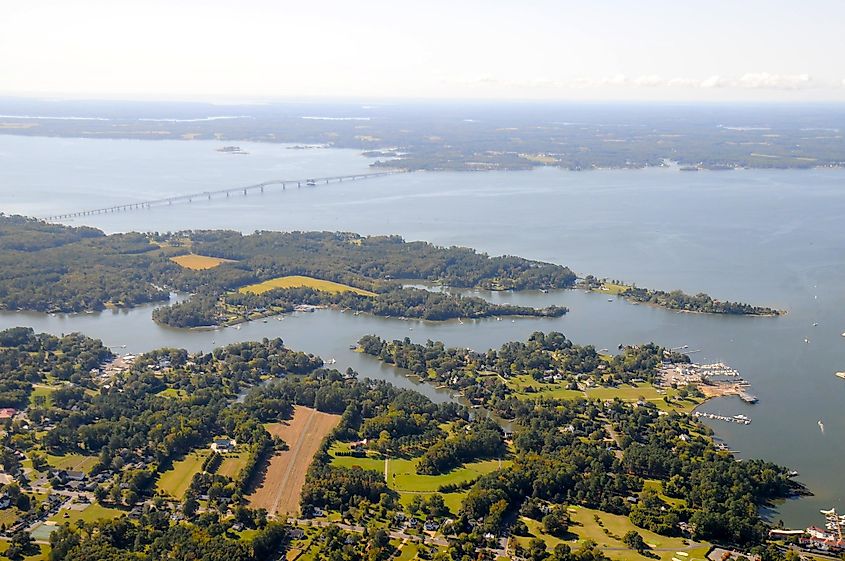
Irvington is a tiny riverside area that lies on a peninsula in the Northern Neck region, where Carter’s Creek meets the Rappahannock River. Much of this place is included in the Irvington Historic District, recognized for its 19th and early 20th-century buildings tied to river commerce and steamboat traffic.
One standout site is The Tides Inn, a waterfront resort established in 1947, which combines hospitality, boating, golf, and regional cuisine into a centerpiece of the town. Nearby, the Steamboat Era Museum delves into the era when paddle-wheelers connected Chesapeake Bay ports, with artifacts, models, and stories. You can also visit Historic Christ Church & Museum, one of Virginia’s oldest colonial Anglican churches, circa 1735, preserved as a historical landmark. For outdoor and scenic experiences, Irvington maintains marinas along Carter’s Creek, supports sailing events, and offers quiet waterside views where osprey, herons, and eagles are often seen.
The Chesapeake Bay is not just the nation’s largest estuary; it’s also home to some of the most inviting small cities on the East Coast. From the maritime heritage of St. Michaels and Oxford to the historic streets of Chestertown and the beachside charm of Cape Charles, each area adds its own story to the Bay’s character. If you are drawn to museums, colonial landmarks, sandy shores, or quiet harbors, these communities show off the Bay’s natural beauty and rich history in ways you can see and feel.
Visiting any of these places is a chance to slow down and enjoy life by the water. With their mix of history, culture, and scenery, the nicest small towns of Chesapeake Bay are places worth exploring again and again.
